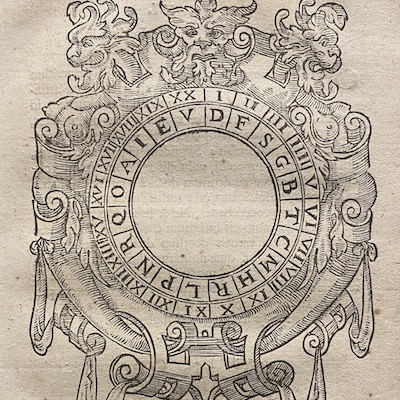
Cipher discs are paper encryting machines made up of two or more rotating dials (called volvelles) embellished with alphabets, numbers, or other symbols. The central volvelle, called the 'index', revolves to encode or decode a message.
Its invention is often credited to Renaissance polymath Leon Battista Alberti (1404-1472), though similar cipher instruments likely date to antiquity. The introduction of printing to fifteenth-century Europe saw the gradual refinement of this paper-and-string cryptologic technology, reaching a highpoint of complexity and beauty in printed books of the sixteenth and seventeenth centuries.
This online exhibit—a playful experiment in shortform, interactive exhibition design—explains what cipher discs are and how to use them, featuring a cipher disc that appears in a 1591 copy of Giambattista della Porta's book "De Furtivis Literarum," or "On Secret Writing." This copy is held in Carnegie Mellon University's Special Collections and is available for in-person consultation and research.
